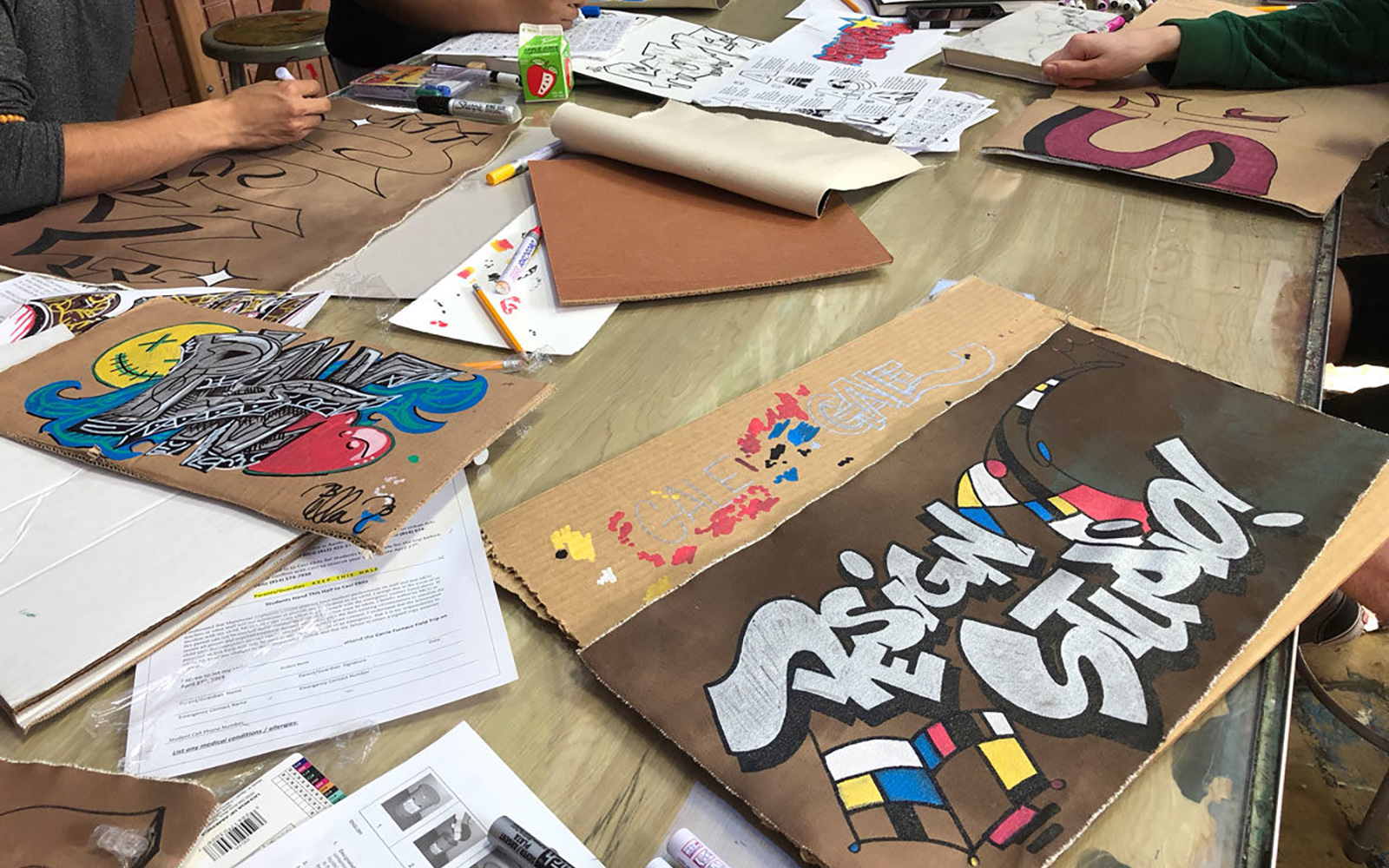These worksheets explore the basics of creating graffiti-esque “type,” or font, to provide students with access to a unique and descriptive art form that combines imagery and lettering. Each worksheet offers tools appropriate for both the beginner and advanced artists to express themselves through words in a creative and visually dynamic manner. These worksheets can be easily completed with materials found in either the home or classroom.
Graffiti Arts Curriculum
Alphabet Design
Worksheet 1.0
Learn the basics to build your own alphabet step-by-step, experiment with serifs and customize existing fonts to create your own. Use this worksheet to create your own comic book and graffiti-styled lettering. POW!
Materials: paper, pencil, eraser
Optional Materials: color pens, color pencils
Worksheet 1.2
Stylize each letter using a range of design techniques. This worksheet outlines different techniques for all styles.
Materials: paper, pencil, eraser, color pens, color pencils, paints, or whatever your preferred medium
Words & Composition
Worksheet 2.0
Break down the steps for creating unique word designs that transform your basic alphabet into dynamic style-writing. If your letters are a bit far apart, use this worksheet to stylize them even more.
Materials: paper, pencil, eraser, color pens, color pencils, paints, or whatever your preferred medium
Worksheet 2.1
Explore samples for creating shadows and depth. These samples are taken directly from a sign-painter’s book; they show depth, convex letters, different styles of drop shadows, and more—a must for visual references.
Fillins & Background
Worksheet 3.0
Experiment with various approaches to fill in letters with texture, gradients and integrate a background. This is your chance to let loose. There are definitely some traditional graffiti styles for filling letters in, but there is no correct way!
For this exercise we want to make our letters larger so we have more areas to color inside of the letters. Come up with a theme for the background. This this can be anything! Sponge Bob, pirates, flowers with bees, a concrete landscape, cartoon characters, color gradients, Picasso-style shapes, or whatever your imagination desires! It is important to not feel restricted here. There is no correct answer for backgrounds and themes; it is entirely up to the artist.
Materials: paper, pencil, eraser, color pens, color pencils, paints, stencils, or whatever your preferred medium. Try to use more color.

Combine & Explore
Worksheet 4.0
Combine shapes, experiment with color, backgrounds, and characters from previous ideas into a more realized concept. Let’s take all of the ideas that we’ve built upon in the previous lessons and really let loose!
About Graffiti Arts
Origins
The word “graffiti” derives from the Italian words “sgraffito” or “sgraffiato,” which were used to describe decorative techniques found in either architecture or poetry. Graffiti is an expressive art form that dates back tens of thousands of years; examples of which can be found in the Lascaux Caves of France, the walls of Pompeii, and by soldiers scrawling “Kilroy Was Here” to deceive the enemy during the second world war. Modern day styles of Graffiti, similar to what we might consider graffiti today, originated in the 1960-70’s in Philadelphia and New York City. This modern graffiti emerged as a tool for self-expression, created primarily by youth from under-represented urban communities, in response to the social and political tensions of that time.
Book early! Contact us to schedule
a learning experience for your students with Rivers of Steel.




